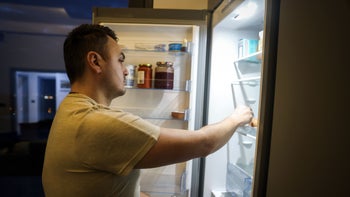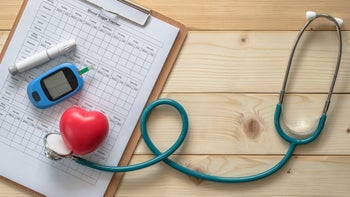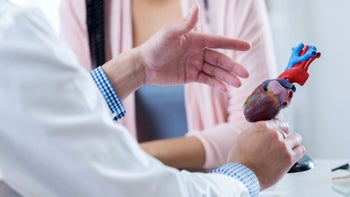
How Do You Know If You Have Diabetes? 11 Early Signs to Watch For (With Images)
Key takeaways:
Diabetes is a condition in which blood glucose (sugar) levels are higher than normal.
Diabetes happens when the body doesn’t make enough insulin, or the body doesn’t respond to insulin as it should.
Identifying early signs of diabetes can help you get ahead of it and prevent long-term health problems. There isn’t a cure for diabetes. But you can treat it with lifestyle changes and medications.
Table of contents
Diabetes affects over 30 million people in the U.S., most of whom have Type 2 diabetes (T2D). You can have prediabetes or T2D for years without knowing it. But it’s possible to prevent and even reverse T2D with lifestyle changes and weight loss.
In contrast, Type 1 diabetes (T1D) is an autoimmune disease that destroys insulin-producing cells. Unlike T2D, T1D can’t be prevented or reversed. Symptoms of T1D tend to come on quickly and you can become very unwell without treatment.
Whether you have Type 1 diabetes or Type 2 diabetes, the main problem is hyperglycemia (high blood sugar levels). Over time, high blood glucose levels cause damage to blood vessels, nerves, tissues, and organs. There’s another problem, too: As glucose builds up in blood vessels, it doesn’t get into the cells and organs that rely on glucose as their primary source of energy.
Save on popular GLP-1 Agonists
Take control of your health. With GoodRx, you may be eligible to save even more on popular treatments.

All the early signs (and long-term problems) of diabetes are caused by the combination of high glucose in the blood and low glucose in vital cells and organs. Here are some signs you may notice happening in your body if you have undiagnosed or untreated diabetes.
1. You feel very thirsty
When you have too much glucose in your blood, your body works hard to flush it out. To get rid of the extra glucose, your body pulls water from your muscles and organs. As a result, you’ll feel extremely thirsty and drink more to replenish that water.
2. You need to urinate a lot — and often
A frequent need to urinate goes hand in hand with the thirsty feeling. Once your body pulls water from your other organs, your kidneys will help get rid of the glucose in your blood the only way they know how: by making more urine. And the more glucose there is in your blood, the more you'll have to use the restroom. This, in turn, causes dehydration and greater thirst.
3. Your mouth and skin are dry
Because your body is using a lot of water to get rid of extra glucose, your mouth and skin may start to feel dry, too. You may find that no matter how much you drink or how much lotion you use, your mouth and skin stay dry and itchy.
4. You feel very hungry (even when you’re eating)
Insulin helps turn the food you eat into energy. When the insulin your body makes isn't working effectively, your body isn’t able to make the energy it needs. Because of this, your body mistakenly thinks it needs to eat more and tells you that you’re hungry.
5. You feel very tired
When your body can't convert the food you eat into the energy it needs to function, you’ll feel tired and low on energy. In addition to feeling tired, managing diabetes can also make you feel frustrated, stressed, and burned out (called diabetes distress).
Skin changes in diabetes: From discoloration to growths, learn the ways diabetes can change your skin (with pictures).
Living with diabetes: Four people share their best tips for living with and managing Type 2 diabetes.
Exercising for diabetes: Read about the best types of physical activity that can help you manage diabetes.
6. You’re losing weight unexpectedly
When your body can’t get the energy it needs from the food you eat, it begins to burn fat stores instead. This can lead to sudden weight loss, even if you’re eating a lot. People with T1D are more likely to have this problem than people with T2D. But it can happen to some people when they first develop T2D.
7. You’ve got eye problems, like blurry vision
When your blood glucose levels are high, the lenses in your eyes can swell. The swelling can cause blurred vision. This is one of the earliest signs of diabetes. And it's the reason why an eye doctor may suspect that you have diabetes. But the good news is that once diabetes is diagnosed and treated — and your blood glucose gets back within target range — the blurriness should clear up.
8. You have frequent infections or slow healing
High blood glucose levels weaken your immune system, making you more prone to infections. You might notice that infections heal more slowly, or that you’re getting more infections than you used to get. Yeast infections and cellulitis are closely associated with high blood glucose, so be on the lookout for these infections in particular.
9. Your skin is discolored
High blood glucose is associated with different types of skin changes and rashes. Here are two of the more common ones.
Acanthosis nigricans
Acanthosis nigricans causes your skin to become dark and velvety in texture. It usually occurs on the back of your neck, by your armpits, or on your forehead. This can be one of the earliest signs of high blood glucose. Here are some acanthosis nigricans pictures.
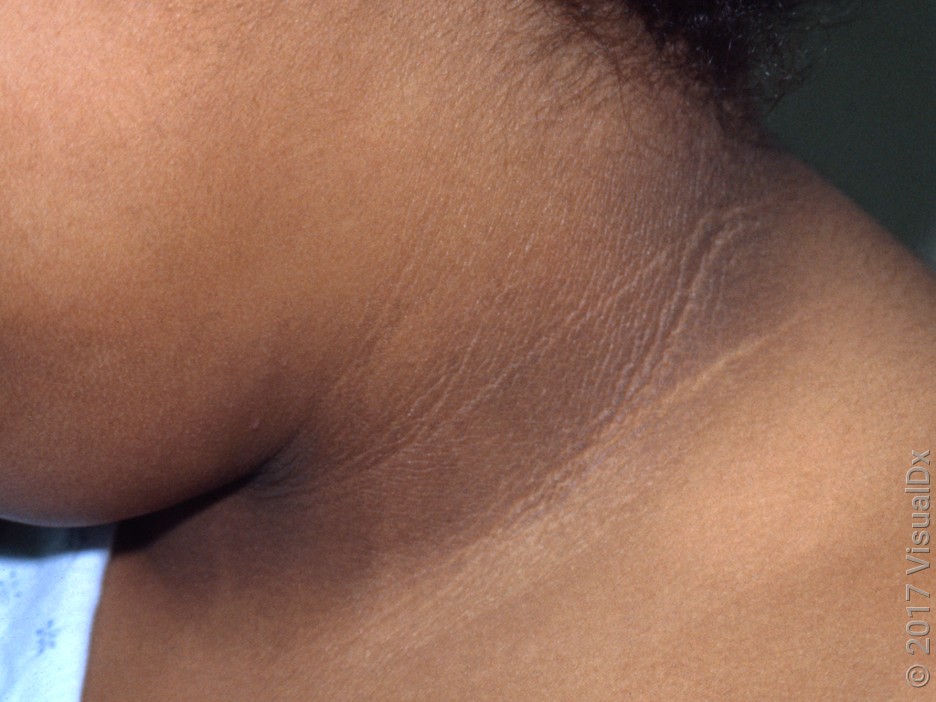
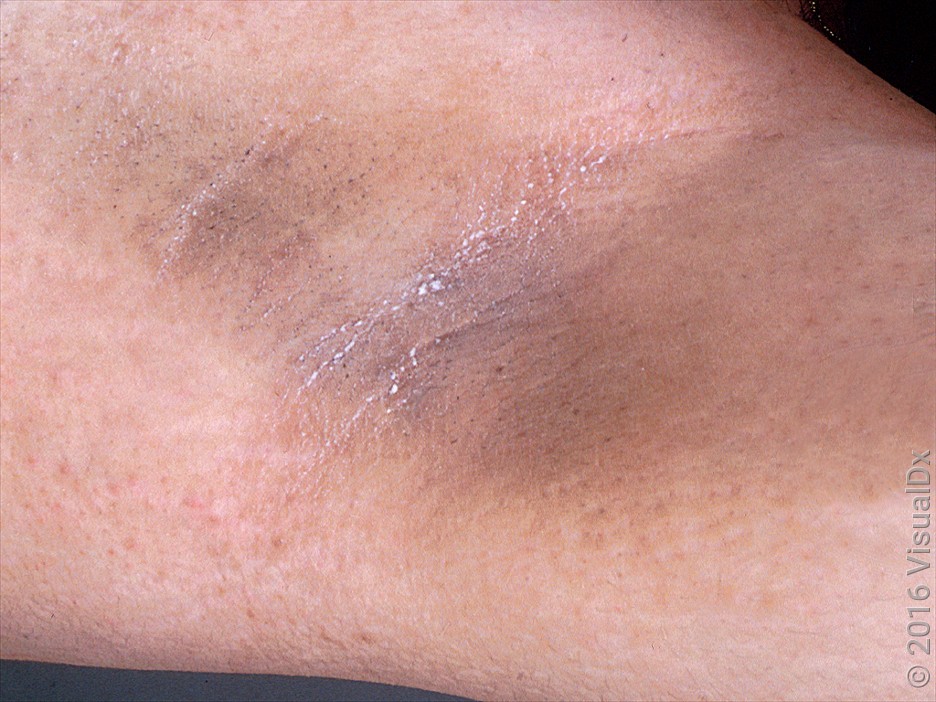
Diabetic dermopathy
Diabetic dermopathy causes reddish-brown, flat patches on the shins. They’re common on both legs and can become indented. Here’s what diabetic dermopathy can look like.

10. You feel tingling or numbness in your hands and feet
Having high blood glucose levels over a long period of time can cause nerve damage. This is known as diabetic neuropathy. It usually causes tingling and numbness in your hands and feet. About half of people with diabetes end up getting this type of nerve damage. You have to be living with diabetes for a long time to get this type of nerve damage, so it’s not technically an early sign.
11. You get headaches
Headaches can also be a sign of diabetes. They can happen when blood glucose levels are too high (or too low). Diabetes headaches can also happen when certain nerves in the head are damaged from diabetic neuropathy.
Quiz: Do I have diabetes?
How do I know if I have diabetes?
The only way to know for sure if you have diabetes is to get tested for it. If you’re regularly noticing any of the above symptoms, don’t hesitate to let a healthcare professional know. Though there’s no cure for diabetes, it’s a treatable condition and reversible, in some cases. Plus, prediabetes (a condition that occurs before you’re diagnosed with Type 2 diabetes) can be reversible with early intervention. And the earlier prediabetes or diabetes is diagnosed, the better. Early diagnosis can help to lower the risk of long-term complications of diabetes.
Diagnosing diabetes
To diagnose diabetes, a healthcare professional will do a physical exam and order blood testing, if needed. Here are the three blood tests used to diagnose diabetes:
A hemoglobin A1C (HbA1C or A1C) test
A fasting blood glucose test
An oral glucose tolerance test
You won’t usually need all three tests.
Understanding your diabetes test results
To help you understand the results of your diabetes test, read this table.
Hemoglobin A1C | Fasting glucose | Oral glucose tolerance test | |
|---|---|---|---|
Normal | Less than 5.7% | Less than 100 mg/dL | Less than 140 mg/dL |
Prediabetes | 5.7% to 6.4% | 100 mg/dL to 125 mg/dL | 140 mg/dL to 199 mg/dL |
Diabetes | 6.4% or higher | 126 mg/dL or higher | 200 mg/dL or higher |
As a general rule, if your tests suggest diabetes, you’ll get a second set of tests on a different day to confirm the diagnosis. Your medical team will let you know if this is necessary.
Is there anything I can do to prevent diabetes?
Type 1 diabetes isn’t a preventable illness. But prediabetes and Type 2 diabetes can be prevented with early treatment and intervention. Though you can’t change some factors (like your genetics, age, and family history), there are other things you can do to lower your risk of developing diabetes.
To help prevent diabetes:
Get regular medical check-ups. Active management is an important part of preventing or delaying diabetes. Schedule appointments, complete lab work, and pay attention to symptoms of diabetes.
Make healthy eating a lifelong priority. The American Diabetes Association (ADA) recommends eating more fruits, vegetables, nuts, and whole grains to help lower your risk.
Stay active. To help lower your risk of developing diabetes, the ADA recommends at least 150 minutes of physical activity a week. (That’s a little over 20 minutes a day.) Create a plan with a healthcare professional to safely increase activity over time.
If recommended, try to lose weight. Try to lose weight if you have a body mass index that’s considered overweight. Carrying excess weight, especially around your middle, raises your risk for diabetes.
Frequently asked questions
For the most part, men and women experience the same signs of diabetes. One big difference is during pregnancy. Women who didn't have diabetes before they were pregnant can develop diabetes during pregnancy. This is called gestational diabetes. It usually goes away when the pregnancy is over. But getting gestational diabetes during pregnancy is a sign that you’re more likely to get diabetes later in life.
Feeling very tired is one sign of diabetes. It’s possible that falling asleep after eating could be related to undiagnosed diabetes. But there are lots of other reasons why you might get tired after a meal.
Other reasons you might feel tired after a meal include:
Certain medical conditions (like depression or thyroid disorders)
The type of food you ate
The size of your meal
Drinking alcohol with your meal
Diabetes can cause many changes to your skin, including your hair. High blood glucose levels can damage the blood supply to your hair follicles. And the stress of undiagnosed or untreated diabetes on the body can interrupt hair growth cycles. Also, hormonal imbalances common in Type 2 diabetes are linked with hair thinning and hair loss. If you have diabetes, keeping your blood glucose levels in your target range will help to maintain your overall health — including your hair.
Diabetes is a common medical condition. But it’s a serious one. Though some symptoms of diabetes can seem mild, diabetes should always be evaluated and managed with the help of a healthcare professional or diabetes care team. This is because diabetes that isn’t well-managed puts you at increased risk for bigger issues, like strokes and heart attacks. So, even if you aren’t too worried about your symptoms, you should see a healthcare professional quickly for any symptoms of diabetes.
The bottom line
It can be tricky to know whether you have prediabetes and Type 2 diabetes because symptoms can go unrecognized for a while. But, the earlier you get a diagnosis and act, the more likely it is you’ll be able to reverse diabetes or at least prevent long-term health issues. Preventing Type 2 diabetes is possible, and knowing the signs will help you get on the path to better health faster. And knowing the early signs of diabetes can help you avoid some of the serious and life-threatening problems.
Why trust our experts?



Images used with permission from VisualDx (www.visualdx.com).
References
American Diabetes Association. (n.d.). Statistics about diabetes.
American Diabetes Association. (n.d.). Understanding neuropathy and your diabetes.
American Diabetes Association. (n.d.). Weekly exercise targets.
Athwal, A. (2025). Eight symptoms of Type 2 diabetes. Permanent Medicine.
Kaushal, K., et al. (2003). Headache in diabetes—occipital neuropathy. Journal of the Royal Society of Medicine.
Miranda, J. J., et al. (2016). Hair follicle characteristics as early marker of Type 2 diabetes. Medical Hypotheses.
Oakley, A., et al. (2019). Skin problems associated with diabetes mellitus. DermNet.


